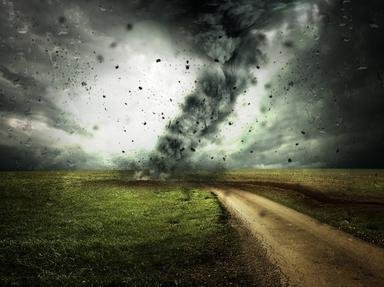Quiz Answer Key and Fun Facts
1. Which Australian state was hit by a series of floods in December 2010-January 2011?
2. The Bhola Cyclone of 1970, which is considered to be the deadliest tropical storm of the 20th century, formed over which body of water?
3. A 100 year flood is a term used to describe a flood that has only one percent possibility of occurring in any year. During which season did such a flood occur in the Bavaria and Tirol regions of Germany in 1999 leading to it being named thus?
4. Which junta-ruled Asian country was hit by Cyclone Nargis in May 2008 with its strong winds and heavy rain causing widespread destruction?
5. Usually considered to be a semi arid region, the southern part of which Canadian province received exceptionally heavy rain in June 2013 triggering off floods that were described as the worst in the region's history?
6. Which major Indian city was crippled in July 2005 when it received more than 39 inches of rainfall within a 24 hour period?
7. Frequent flooding of the Yellow River and the resultant death and destruction has led to the river being known by which of the following names?
8. An earthquake in which South American country in 1960 led to a tsunami that affected countries as far off as the Philippines, Japan, New Zealand and the Aleutian islands of Alaska, USA?
9. Which country was hit by a tsunami in March 2011 whose aftermath included meltdowns at nuclear power stations?
10. Devotees en-route to one of India's foremost pilgrimage places were caught unawares by torrential rains and flash floods in June 2013. Which part of India did this disaster occur in?
Source: Author
zorba_scank
This quiz was reviewed by FunTrivia editor
bloomsby before going online.
Any errors found in FunTrivia content are routinely corrected through our feedback system.

